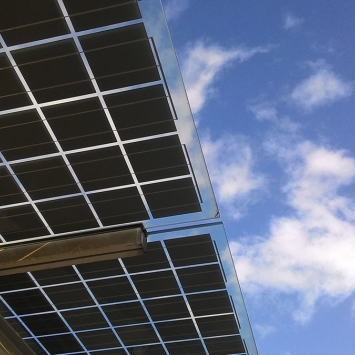The case study was carried out on a 414 kWp photovoltaic park on the ground, equipped with string inverters, operating since June 2011.

Result
- Plant type: Photovoltaic on the ground
- Nominal power: 414 kWp
- Site: Veneto
- Solution: Revamping with Pid Box
- Tools: Electric and thermographic measuring campaigns + Plant optimisation with revamping
- Efficiency: +25% in 4 months on the section affected by PID
- PBT: 2 years
From the performance monitoring activity there were relevant differences on the annual production of several sections.
The "Photovoltaic Pid Strategy" case history, describes the field operations (retrofit) performed by Energy Intelligence and empirically confirms the preliminary data presented in the case study published in Milan by Omron at Solar Asset Management Europe 2015:
- What is PID
- Analysis of the performance indicators detected by the Asset Management platform
- Diagnosis and identification of the cause
- Project resolution
Following is some data extracted from the complete "Case History" that can be downloaded ONLINE.
"… Comparing the annual production (kWh) from 2011 to 2015 of 23 sections, it has shown that, over the years, significant and progressive decays have been registered up to reaching section inefficiencies of over 25% ..."

Tab.1 summarises the annual delta % of the productions measured at the sections identified in the field from number 15 to 17 compared with average-performance section number 5.
OPTIMISATION STRATEGY 
The Energy Intelligence resolution strategy started in February 2016 when, after appropriate prior communication to GSE, Energy Intelligence provided and installed the PID BOX in the field, simultaneously launching a monitoring campaign to measure the effectiveness of the solution. The idea of Energy Intelligence was to divide a part of the photovoltaic field into 3 sections:
- Section 1: identified by inverter number 5, connected to modules NOT affected by PID
- Section 2: identified by inverter number 15, connected to modules affected by PID
- Section 3: identified by inverter number 16, connected to modules affected by PID and section treated by installing a PID BOX
EFFECT OF THE INTERVENTION 
Monitoring solution and reporting of achieved energy benefits.
Once the above-described strategy was applied, the final data was collected, and the 3 sections were analysed (5, 15, 16). The data collected in the "monitoring campaign" is summarised in the following tables. The most significant data is certainly that concerning section number 16 that was treated, that shows a & improvement compared to the production obtained on section number 15 affected by PID but not treated with PID Box. This % recovery reaches + 25 % in around 4 months of application.

TAB.2 – Production trend (kWh) of sections 5, 15, 16 in the monitoring period.

TAB.3 Result in % terms of performance recovery.
Table 2 summarises monthly production data (kWh) measured at the top of the three sections during the entire monitoring period (for the complete explanation of tables 2 and 3 CASE HISTORY PID Energy Intelligence).
Optimisation therefore led to an increase in revenues of over 11,250 per year, with a +37,500 kWh per year.
The efficiency recovery shown empirically on the pilot section is 25% in 4 months. This data projected to the section affected by PID (540 modules per 125 kWp) would result in an annual recovery of around 1200 kWh/kWp x 125 kWp X 25% = 37,500 kWh. That is, 11,250.00 Euros more each year.
If we consider that the total investment required for the resolution of inefficiency is quoted at around a one-time € 25,000 Euros, the investment return is therefore expected in just over 2 years.